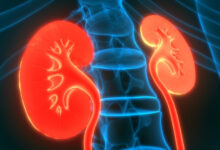Brachytherapy

Brachytherapy, which is expressed as close range therapy and is of Greek origin; It is a form of treatment that allows us to give high doses of radiation that we cannot give with external radiotherapy, thus increasing our chance of controlling the tumour.
It is necessary to give a certain dose to control the tumour. However, if we give all of this dose with the treatment devices that send the beam from the outside, very serious side effects may occur in some tumours. For this reason, radioactive sources are some cylinders, needles, etc. Appropriate radiation dose can be given by placing the apparatus near or inside the tumour. This radiation applied with brachy reaches a certain distance, after a certain point there is a very rapid dose reduction.
We can apply brachytherapy in different types of cancer. It is applied to the vaginal stump alone or in addition to external treatment after surgery in uterine cancers. In advanced cervical cancer cases, it is applied near or inside the tumour with various applicators without the need for surgery.
Especially in oesophagus (oesophageal) cancers or bronchial (lung tube) cancers into the cavity (lumen); with plaques in the prostate, eye tumours; It is possible to apply needles directly into the tumour during surgery in recurrent head and neck cancers, some soft tissue cancers or early stage breast cancers.
Except for brachytherapy with needles or applicators placed in the tissue in the operating room, pain does not occur too much. If the patient’s pain threshold is low, light anaesthesia can be applied optionally. In Brachytherapy sessions applied between 1 and 5 sessions, previous treatments are very important. This treatment history determines the duration of the session.
What Are the Side Effects of Brachytherapy?
Side effects vary depending on where it is applied. We apply brachytherapy mostly in female cancers. Side effects that may occur when applied in female cancers:
- Frequent urination due to irritation and infection in the urinary tract, as well as burning when urinating, rarely bleeding,
- Bleeding, pain or straining during defecation in people with hemorrhoids,
- Tightness and dryness in the vagina,
- Rarely, possibility of treatment-related second cancer (earliest occurring 10-15 years after treatment).
After the application, the person does not carry radiation. Therefore, there is no objection to physical contact. When there is a complaint in the urinary tract, drinking plenty of water, antibiotics or urinary antiseptics may be recommended.
She can return to her sexual life 4-6 weeks after the treatment, and even sexual intercourse is recommended to prevent vaginal stenosis. If any negativity is observed after brachytherapy, it is necessary to contact the doctor.








